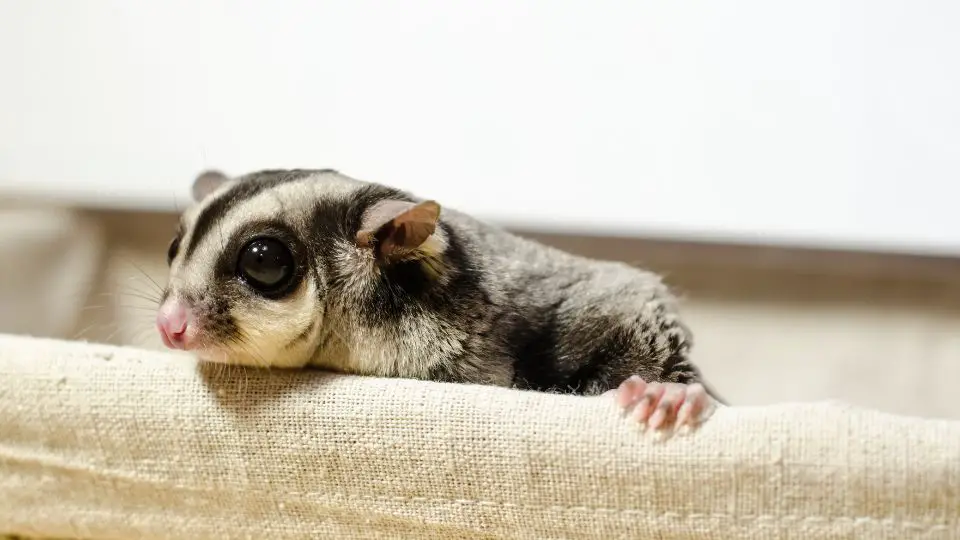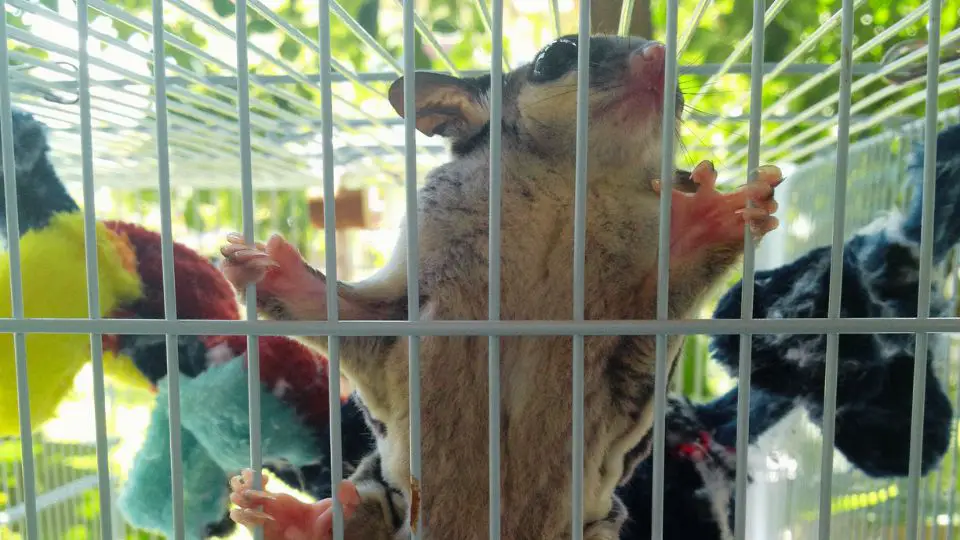Sugar gliders are prone to health issues just like any other pet. While most of these health issues are not life-threatening, there is one condition that sugar gliders can experience which can be fatal: strokes.
A stroke occurs when the blood supply to the brain is interrupted, depriving the brain of oxygen. Sugar gliders can have strokes if they experience a sudden drop in blood sugar levels, if they are injured, or if they have a heart condition.
In this article, we take a look at some reasons why a sugar glider may have a stroke, what can you do to prevent it and what are some signs of a stroke.
Can a sugar glider have a stroke
The short answer is yes, sugar gliders can have strokes. However, it is important to note that strokes are relatively rare in sugar gliders and that there are many different potential causes. If you think your sugar glider may be having a stroke, it is important to seek veterinary attention immediately.
A stroke occurs when the blood supply to the brain is interrupted. This can happen due to a blockage (ischemic stroke) or bleeding (hemorrhagic stroke). When the brain doesn’t get enough oxygen, it starts to die.
In general, a sugar glider stroke is more likely to be caused by chemicals or physical trauma than by a clot or bleed. Nevertheless, any interruption in blood flow to the brain can cause a stroke.
There are many potential causes of a sugar glider stroke. These include:
- A head injury
- Blood clotting disorders
- Heart disease
- High blood pressure
- Infection
- Kidney disease
- Liver disease
- Tumors
Some of these conditions are more common in sugar gliders than others. For example, head injuries are relatively common due to their small size and fragile bones. Blood clotting disorders are also relatively common, as sugar gliders are prone to developing thrombocytopenia (low platelet count).
Other conditions, such as heart disease and high blood pressure, are less common but can still occur. In some cases, the exact cause of a sugar glider stroke may never be determined.
Can sugar gliders have seizures?
Yes, sugar gliders can have seizures. Seizures occurs when there is abnormal electrical activity in the brain. They can be caused by many different things, including head injuries, infections, and tumors.
While seizures can be scary, it is important to remember that they are not always life-threatening. In most cases, sugar gliders will recover from a seizure without any long-term effects, but it’s important to seek veterinary attention fast if your sugar glider has a seizure.
Signs of sugar glider health issues
The symptoms of a stroke vary depending on which part of the brain is affected, but may include:
Sudden weakness or paralysis on one side of the body
A common sign of a stroke is sudden weakness or paralysis on one side of the body. This is because the stroke affects one half of the brain.
Your sugar glider may even run in circle due to the paralysis.
Sudden blindness in one eye
If the stroke affects the part of the brain responsible for vision, your sugar glider may suddenly become blind in one eye.
Confusion or disorientation
A sugar glider may become confused or disoriented if the stroke affects the part of the brain responsible for processing information.
Loss of balance or coordination
A sugar glider may lose its balance or coordination during a stroke.
Shivering or shaking
Shivering or shaking are common signs of strokes. This happens because the stroke affects a vessel that supply blood to the brain.
Drooling
Drooling can be a sign of a stroke, but it can also be a sign of other health issues. If your sugar glider is drooling, it is important to seek veterinary attention.
How to prevent a sugar glider stroke
There is no sure way to prevent a sugar glider stroke, but there are some things you can do to reduce the risk. These include:
Providing a clean and safe environment
Making sure your sugar glider has a clean and safe environment to live in is important for its overall health. This includes making sure there are no sharp objects or chemicals that could injure your sugar glider.
Make sure your glider has a proper diet
A proper diet is important for all animals, and sugar gliders are no exception. A healthy diet will help to reduce the risk of diseases that can lead to a stroke.
Keeping your sugar glider active
Exercise is important for sugar gliders, as it helps to keep their hearts healthy. A healthy diet is also important, as sugar gliders are prone to obesity.
Taking your sugar glider to the vet for regular checkups
Regular checkups with a veterinarian can help to identify any health issues that may put your sugar glider at risk for a stroke.
Conclusion
In conclusion, sugar gliders can have strokes, but there are some things you can do to reduce the risk. Providing a clean and safe environment, making sure your sugar glider has a proper diet, and keeping your sugar glider active are all important. Taking your sugar glider to the vet for regular checkups is also a good idea.







